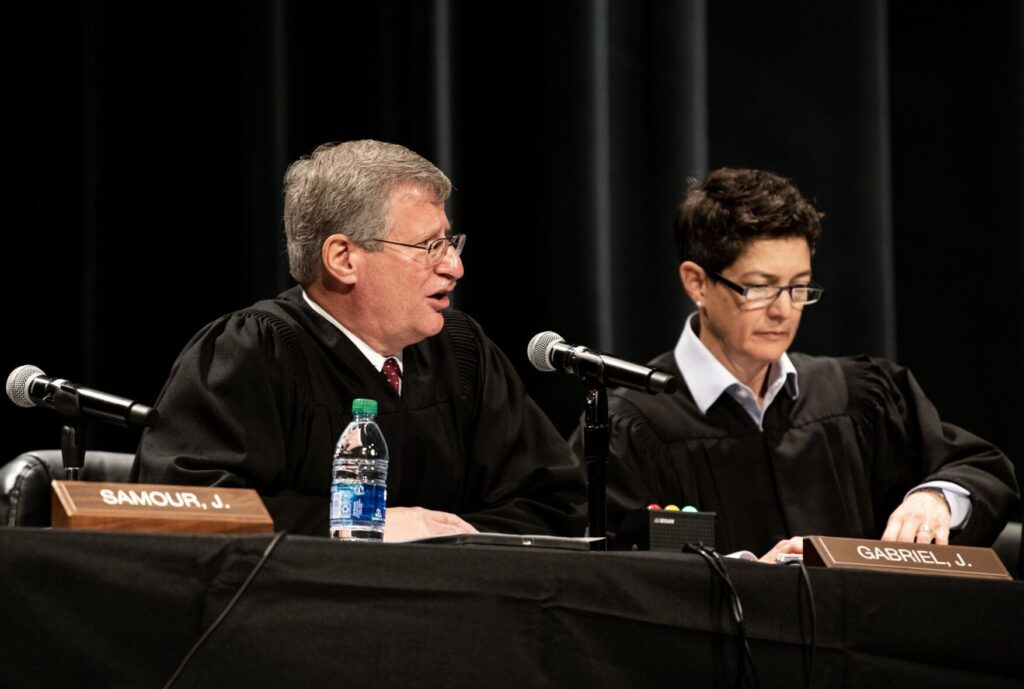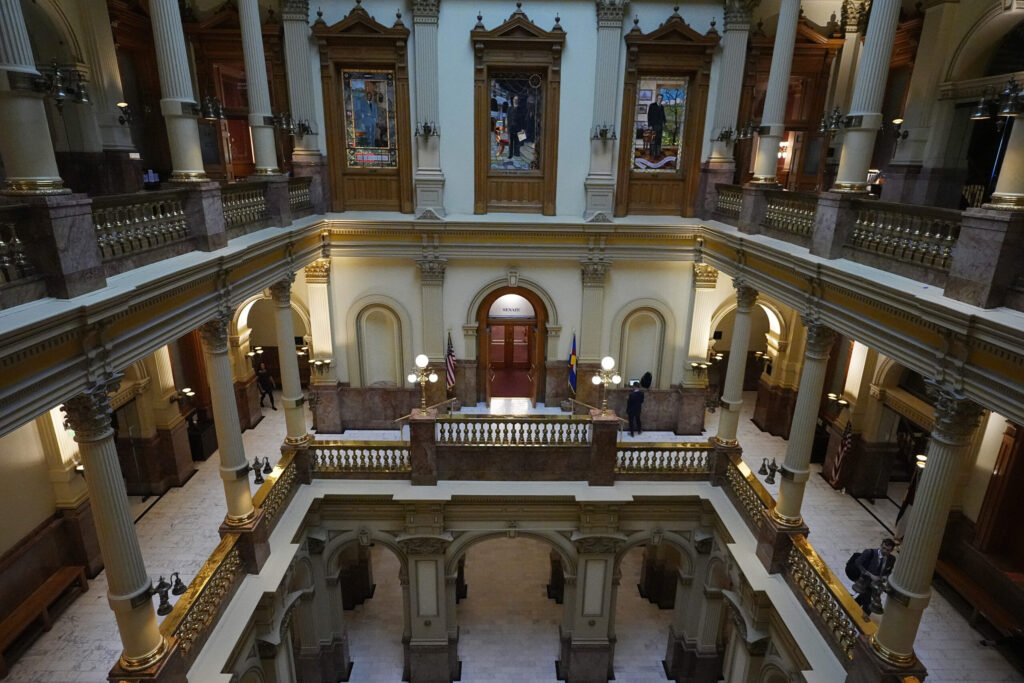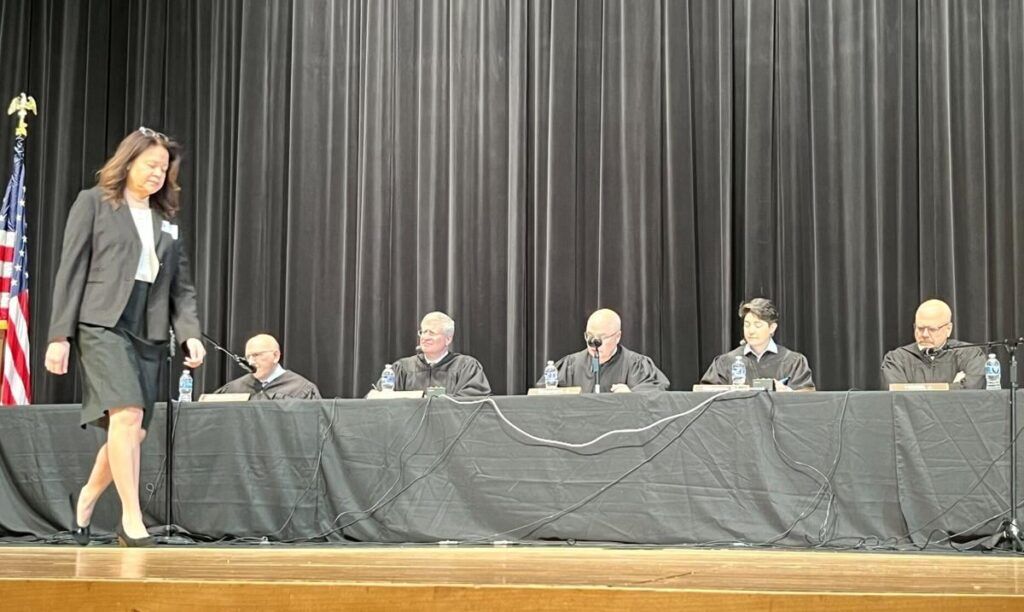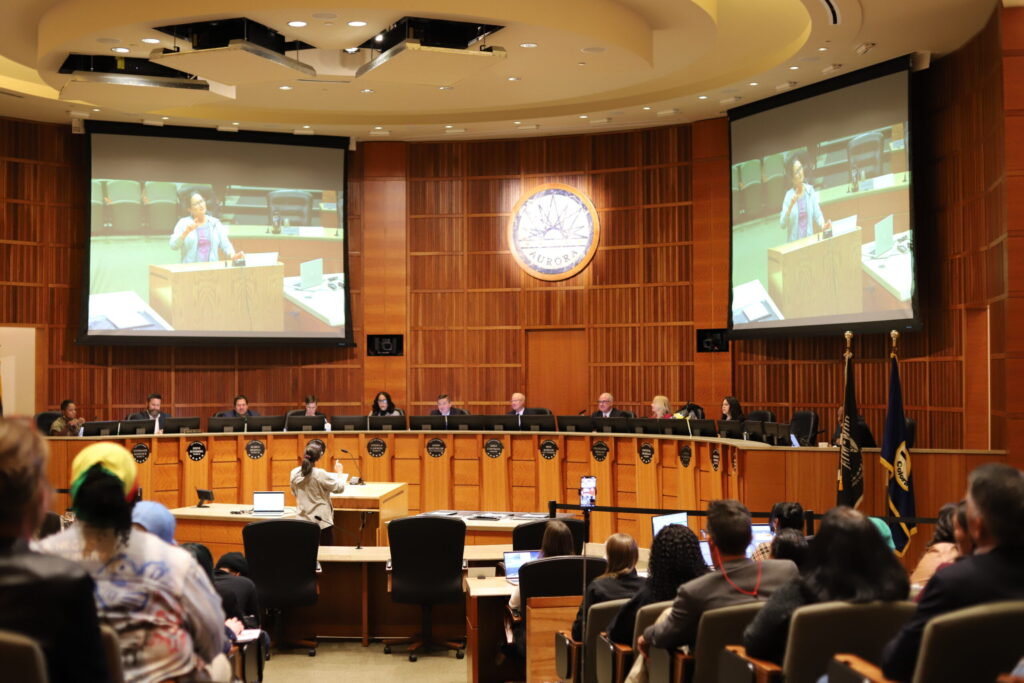What happens during a government shutdown and how will it affect Colorado?

A looming government shutdown could leave hundreds of thousands of federal employees without a paycheck and close many government services.
The impact of a shutdown would vary from state to state. Among its most visible impact in the state could include the temporary closure of the Rocky Mountain National Park. Officials in Colorado have offered to “partner” with the federal government to keep the Rocky Mountain National Park open in case of a shutdown, noting it’s the middle of the popular leaf-peeping season. The Rocky Mountain National Park is a key driver of tourism in the state. Meanwhile, in Lakewood, local officials also worry about the impact of a shutdown, noting the city is home to a federal center where thousands of federal employees work.
A funding bill requires 60 votes to be adopted in the Senate. Senate Republicans only have a three-seat net majority, which means it cannot pass if only the 53 Republicans in the Senate voted for it — it must have at least seven Senate Democrats vote in its favor. Sen. John Fetterman, D-Pa., indicated he would vote in favor of it.
The government will shut down at 12:01 a.m. on Oct. 1 if it is not funded.
What is a government shutdown?
Congress is required to pass a series of 12 appropriations bills every year by Oct. 1 to fund the next fiscal year. The legislative body, however, has not passed any of the 12 bills ahead of that deadline.
A handful of appropriations bills have passed the House and Senate separately, but none have gone to conference committee, which is where the chambers work out the differences in their bills. Therefore, none has become law.
If Congress cannot pass a short-term funding measure to continue funding the government at its current levels in what is known as a “continuing resolution,” the government will shut down until an agreement is reached.
Since 1980, there have been 14 shutdowns, according to the Bipartisan Policy Center.
The longest government shutdown lasted five weeks during the Trump administration in 2018 amid disagreements over funding the president’s border wall with Mexico.
The government would experience a partial shutdown if Congress could only pass some but not all of the annual appropriations bills by Oct. 1.
What will be affected by a shutdown?
Nonessential government employees may be furloughed during a shutdown, as they are forced to take an unpaid leave of absence.
Some services will remain mostly as usual. Retirees will continue to see their Social Security checks during a shutdown. Medicare benefits will continue as normal, but some services may lag. Food benefits for nearly 42 million people through the Supplemental Nutrition Assistance Program will not be immediately disrupted, but payments could be affected later in the year, depending on how long this shutdown lasts.
The Postal Service will also continue normal operations.
Other essential services, including air traffic control, law enforcement, and power grid maintenance, will continue their operations. Air traffic could be affected, however, if controllers stop coming to work because they aren’t being paid for the duration of the shutdown, as occurred in the 2018-2019 shutdown.
Previous shutdowns have closed hundreds of national parks and museums, curtailed services for veterans, suspended health inspections, and pushed back immigration hearings.
What is the debate in Congress about this year?
Both Republicans and Democrats have blamed each other for the possible shutdown.
Democratic leaders have advocated an extension of Obamacare subsidies, which expire at the end of the year. House Speaker Mike Johnson and Senate Majority Leader John Thune are not expected to budge because the GOP refused to include any Democratic requests.
Thune has said he is open to talking about extending the healthcare subsidies later in the year but has rejected tying them to a measure to keep the government open.
“I’m very comfortable with the position that we have,” Thune said on NBC News’s Meet the Press on Sunday. “It’s to fund the government, finish the appropriations process, and deal with the issues the Democrats want to deal with after we keep the government open.”
President Donald Trump is scheduled to meet with Senate Minority Leader Chuck Schumer and House Minority Leader Hakeem Jeffries on Monday at the White House after previously canceling a negotiation meeting at Johnson’s urging.
Leaders in both parties ahead of Monday’s meeting said they saw room to negotiate on their funding proposals, but they expressed skepticism about either side compromising.
The White House budget office additionally released a memorandum that directed federal agencies to prepare for permanent layoffs if the government shuts down, which has further angered Democrats.
The House, with its razor-thin GOP majority, passed a continuing resolution that included $88 million in emergency funding to increase security for all three branches of government.
That measure failed in the Senate as Democrats blocked it. Thune said he would bring it for another vote before the chamber on Tuesday night, just before the shutdown deadline.
How will a shutdown affect Colorado?
The impact of a federal government shutdown on Colorado would grow the longer it lasts, according to state officials. Funding for federal awards would likely get delayed, which may cause a gap in services. Officials said they are evaluating options to prevent risks to life, health and safety, adding they’re particularly wary of “backlogs” that could have ripple effects across the government and the economy that could take months or years to rectify.
They don’t expect to see major or widespread impact to state-run programs or to the state government workforce on Day 1 of a federal shutdown. But they anticipate some programs would be affected, which they said would grow the longer a shutdown lasts. Officials said they expect an immediate impact on USDA’s Special Supplemental Nutrition Program for Women, Infants, and Children, noting this program runs out of benefit funding on Sept. 29. The Polis administration is working to secure state funds for an emergency supplemental budget to fund one month of benefits.
“A shutdown will hurt hardworking Coloradans, plain and simple. We saw during the last federal shutdown how billions of dollars in economic activity were lost, workers went without paychecks, and businesses never fully recovered their potential income,” Gov. Jared Polis said in a statement.
What about the Rocky Mountain National Park?
The Polis administration is asking the federal government to keep national parks open and staffed or to create avenues for the state to assist in keeping them open.
“Rocky Mountain National Park is a major draw for visitors from around the world, especially now during leaf-peeping season, and a major economic driver for Colorado’s rural communities and others like it,” the governor said in a statement.
“If Congress does not fund the federal government, I urge the (Trump) Administration to prioritize the operations of the national parks so that they can continue to be enjoyed. Here in Colorado, we are evaluating all options, and are a willing partner if needed, to use limited State funds to keep our biggest park fully operational if necessary.”
A key economic driver for Colorado, the Rocky Mountain National Park sees 75% of the state’s parks-related tourists, while October alone accounts for 10% of annual visits. Back in 2023, Polis issued an executive order directing the Colorado Department of Natural Resources to develop a plan to continue operations of national parks in Colorado and other federal lands in the event of a federal government shutdown. Back then, the department, along with several agencies, have identified options to keep the popular park open and protected on a short-term basis.
Editor’s Note: This article was updated to reflect the 2025 government shutdown negotiations. It was originally published on Dec. 2, 2021. It has also been modified to include details pertinent to Colorado.













